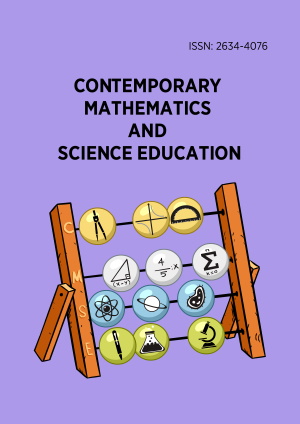Volume 1, Issue 2, July 2020
Research Article
Contemporary Mathematics and Science Education, 1(2), July 2020, ep20006, https://doi.org/10.30935/conmaths/8495
Research Article
Contemporary Mathematics and Science Education, 1(2), July 2020, ep20007, https://doi.org/10.30935/conmaths/8496
Research Article
Contemporary Mathematics and Science Education, 1(2), July 2020, ep20008, https://doi.org/10.30935/conmaths/8497
Review Article
Contemporary Mathematics and Science Education, 1(2), July 2020, ep20009, https://doi.org/10.30935/conmaths/8579

 The articles published in this journal are licensed under the CC-BY Creative Commons Attribution International License.
The articles published in this journal are licensed under the CC-BY Creative Commons Attribution International License.